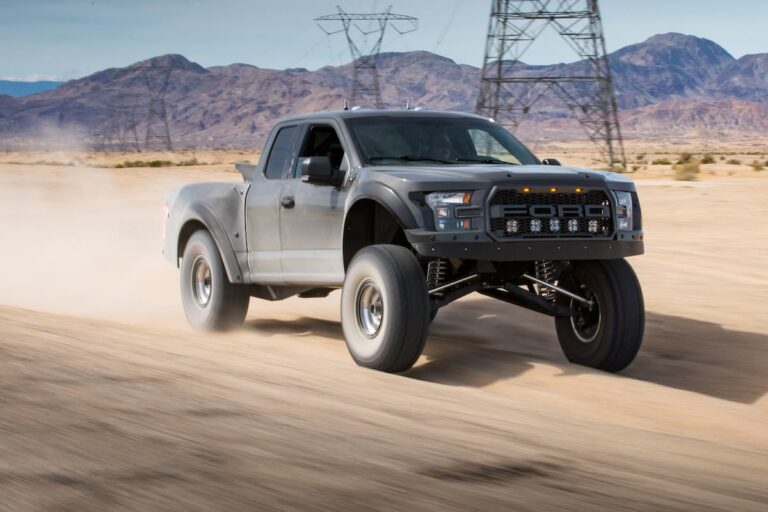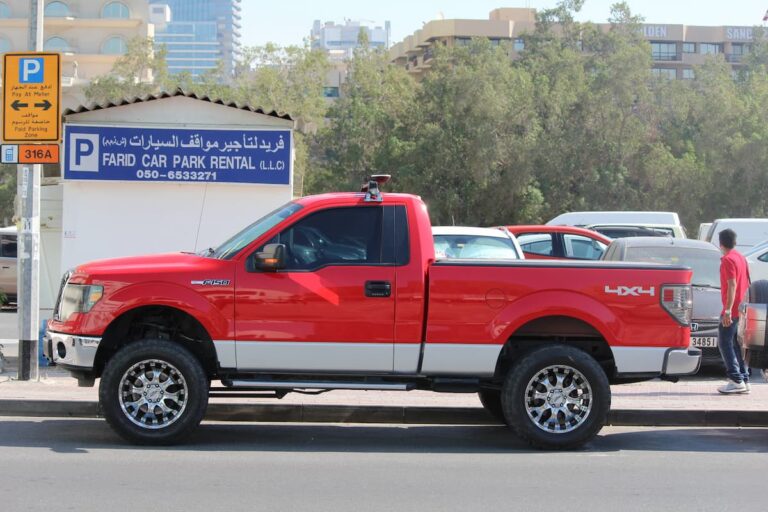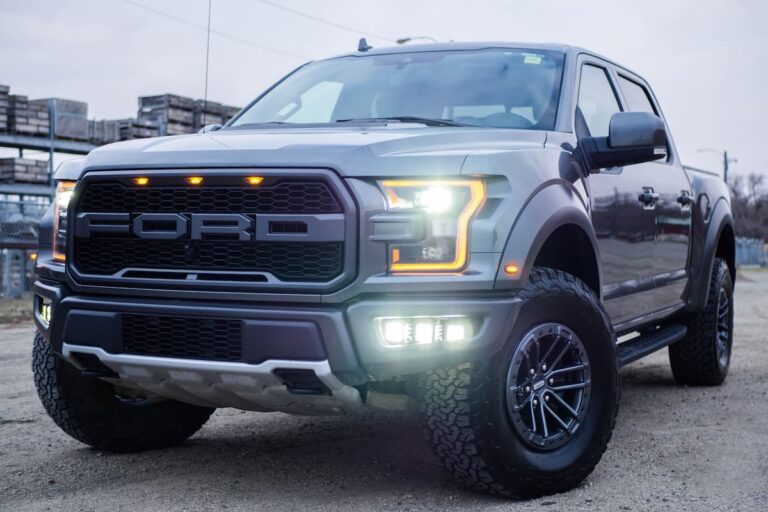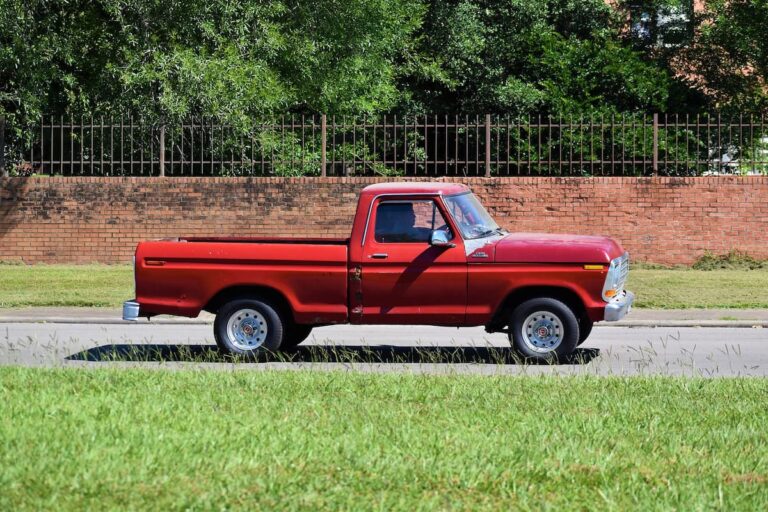Can You Tow A Ford F-150 With A Tow Dolly?
Tow dollies have their place in the towing world. However, they’re not the best when towing pickup trucks, let alone 4×4 Ford vehicles.
As per Ford, the F-150 isn’t designed for towing with a tow dolly. The body is too beefed-up to make the trip without a dent. Tow dollies also carry no more than 3900 lbs (1769 kg), and weighing in at over 4000 lbs (1814 kg), the F-150 is past the limit.
However, all hope is not lost, as flat towing and trailer towing are still excellent options.
Problems With Dolly Towing an F-150
Dolly Towing is when you elevate the front wheels of a vehicle and let the rear wheels roll on as the trailer tows it.
Anyone with driving experience can see how massive cars will have a problem with this process.
You’ll be lucky to fit your F-150 onto the dolly without damaging the fenders or scratching the doors. Your truck will also face substantial wear and tear throughout the process.
And that’s only the minor issues.
Securing the Truck to the Dolly
Fastening any car to a dolly is more challenging than on a trailer.
Because the rear wheels remain unsecured, you must take extra caution when fastening the drive wheels; otherwise, a disaster is on the horizon.
You can’t use the emergency brake or block the truck’s wheels as you would on a trailer. The vehicle is still in motion.
For the 4×4 F-150, taking out the driveshaft and placing it on the dolly is essential to avoid problems with front clearance.
Clearance and Risk of Damage
Even if you get through the stumbling block of fastening your truck to the dolly, you still need to consider clearance issues.
The weight of the F-150 will pull it closer to the ground, and you risk denting if not wrecking undercarriage parts like the muffler and transmission pan.
You also endanger the truck if the wheel track is broader than what the dolly accommodates.
In such a case, the body is the most exposed, and parts like the fenders and bumpers will sustain more damage.
Wear and Tear
The body and undercarriage are not the only problematic areas to consider when hitching your F-150 to a tow dolly – the tires are also at risk.
Cars aren’t designed to run on two tires; if they do, there’s a higher likelihood of uneven wear and tear. If the vehicle in question is an F-150, you can probably count on it.
It’s why dolly towing isn’t advisable for long-distance trips. You can take your truck as high off the ground as possible, but you can’t escape wear and tear.
The state of the road is also vital, and bad roads put your tires at a greater risk.
Moreover, the F-150 can also lose alignment with the dolly on uneven roads, putting other cars at risk.
Backing Up
One of the top inconveniences of dolly towing is the inability to back up. It applies across the board and not only to 4×4 vehicles like the F-150.
Reversing can damage both cars, but the towing vehicle is the most at risk.
If you must reverse your F-150, park the trailer, detach it from the dolly, detach the dolly, and move them to the side.
Proceed with backing up your vehicle and reattaching everything once done.
It’s a huge inconvenience, so to avoid it, make sure everything is in place before departing.
Warranties
Certain warranties do not cover towing methods like dolly towing. The process adds substantial weight to your trailer, which may change its capacity ratings.
It’s not a given that hauling your F-150 will invalidate your warranty, but it’s good to confirm ahead of time.
Maintenance
Tow dollies are expensive structures that require a significant amount of upkeep to keep them running for as long as possible.
They must be kept oiled, and although inexpensive, it requires commitment.
Your tires should also be well-inflated before any journey. Frequently check on them and fill them if necessary.
Proper storage is also vital to increasing your dolly’s lifespan. Don’t keep it in damp areas, and always wash the surface before storing it in a clean, dry place.
Perform regular inspections to ensure it’s in good operating condition.
Can You Flat Tow an F-150?
Yes. Flat towing is possible as long as the F-150 is four-wheel-drive.
Also known as four-down towing, the process entails having all four wheels on the ground as a motorhome pulls the truck.
Wear and tear is still an issue with flat towing, but the risk is spread across all tires, unlike dolly towing, where the pressure is on the rear wheels.
Four-down towing is also advantageous due to the lack of heavy equipment. The entire vehicle is in motion, and all you’ll need is a tow bar, a base plate, and towing essentials like wiring, safety cables, and a supplemental braking system.
Tow Bar
Instead of investing in a dolly, you can get the more inexpensive tow bar and flat tow your F-150.
It’s not only cheaper but also easier to operate because:
- The arms self-align and centrally lock your vehicle for safety
- Tow bar arms have pivot joints that allow quicker disconnects than dollies
- Tow bars also have non-binding release latches for easier disconnects.
Base Plate
The base plate connects the tow bar to the F-150 by securing it to attachment points on the F-150.
Using the right attachment points is vital to avoid towing and road hazards.
Your F-150 may use one of three base plate variations, namely:
- Blue ox base plate
- Roadmaster base plate
- Demco base plate.
Despite its advantages, flat towing doesn’t allow you to back up your F-150, and like dolly towing, you have to disconnect everything to reverse. That said, disconnecting the four-down is easier and faster.
Can You Trailer Tow a Ford F-150?
Yes, you can trailer tow a Ford F-150, and on safety and reduced risk alone, trailer towing is number one. The entire car is off the ground, eliminating concerns about wear and tear and undercarriage damage.
Still, trailer towing requires substantial effort to set up and requires more equipment, including ramps, ratchet straps, and a transmission cooler.
If safety is your priority, look no further than trailer towing. You can travel long distances without worrying about the state of the drivetrain and damaging your transmission.
When trailer towing an F-150, ensure the trailer is long enough for the vehicle and that each axle is at least 3900 lbs (1769 kg) for optimal stability.
Conclusion
Towing a vehicle like the F-150 is always tricky, and finding the right method to minimize the risk of damage is key.
Though the truck’s weight is a significant advantage in other areas, it can work against you if you’re trying to move it without driving it.
Dolly towing is out of the question unless you have immense confidence in your truck.
Flat and four-down towing have specific advantages and disadvantages – one is cheaper but not nearly as safe as the other.
If you need to tow your Ford F-150, it’s likely best to consult a professional who can recommend the best course of action to get you where you need to go.






